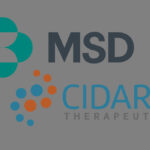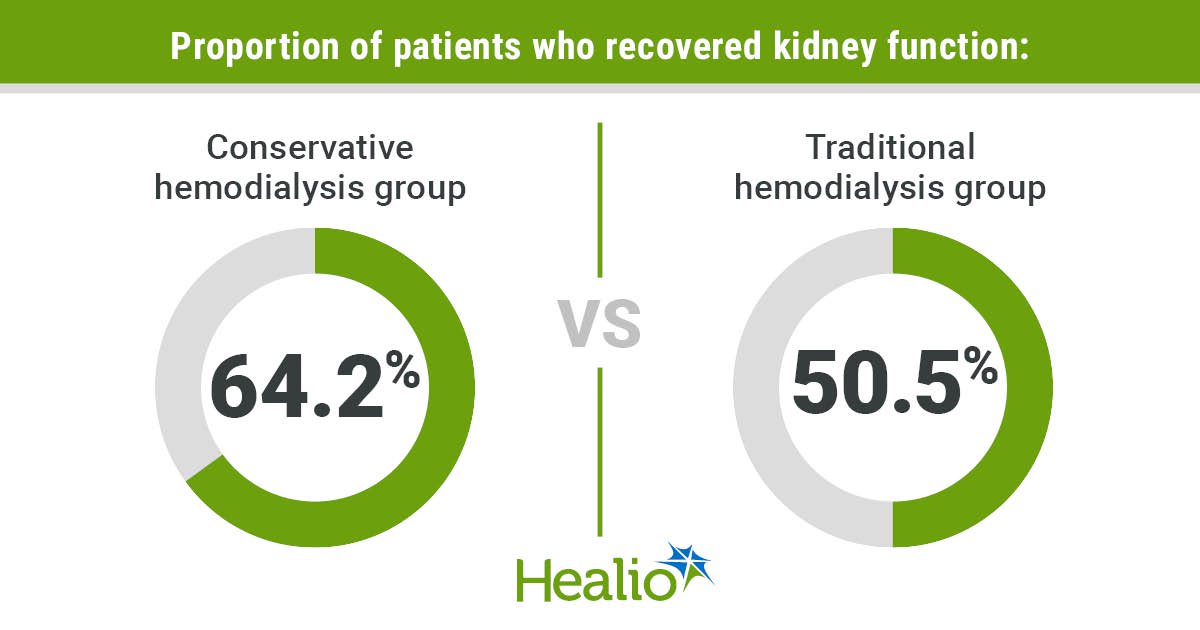November 13, 2025
2 min read
Key takeaways:
- Nearly two-thirds of patients on conservative dialysis recovered kidney function after hospital discharge.
- Patients on conservative dialysis underwent fewer sessions than the traditional dialysis group.
HOUSTON — More patients with AKI recovered kidney function after a conservative hemodialysis strategy compared with patients on hemodialysis three times a week, according to data presented at ASN Kidney Week.
Hemodialysis three times a week remains a widespread practice in nephrology, but Chi-yuan Hsu, MD, MSc, chief of the division of nephrology at University of California-San Francisco Health, and colleagues said this traditional method limits potential recovery.

Data derived from Hsu C, et al. FR-OR083 Presented at: ASN Kidney Week; Nov. 5-9, 2025; Houston.

Chi-yuan Hsu
“There’s been a lot of trials about how to start dialysis … but no study about how to stop,” Hsu said during a press briefing. “We hypothesize the conventional way we do dialysis, which is three times a week if hemodynamically stable … actually impairs renal recovery.”
In a randomized controlled trial across four U.S. medical centers, Hsu and colleagues reviewed data from 220 patients (mean age, 56 years; 67% men; 60% white) with AKI who were hemodynamically stable. The results were simultaneously published in JAMA.
Participants were randomly assigned equally into two groups. One group underwent traditional hemodialysis three times a week until reaching urine creatinine clearance greater than 20 mL per minute or urine output greater than 2 L per day with diuretics or 1 L per day without.
The other group followed a conservative hemodialysis approach, in which dialysis would be initiated only if certain criteria were met: serum urea nitrogen level greater than 112 mg/dL, hyperkalemia above 6 mmol/L or arterial blood gas pH less than 7.15.
Kidney function recovery after hospital discharge, defined as 14 consecutive days without dialysis, served as the primary endpoint. Secondary endpoints included the number of dialysis sessions per week and the number of dialysis-free days up to 28 days.
The mean eGFR was 64.8 mL/min/1.73 m², and patients began kidney replacement therapy a median 9 days before randomization.
Results showed more patients in the conservative dialysis group (64.2%) recovered kidney function compared with the traditional dialysis group (50.5%) at discharge, but the association was not statistically significant in the model adjusted for eGFR and demographic differences.
In addition, patients on conservative dialysis underwent fewer sessions than the traditional dialysis group (median, 1.8 vs. 3.1), had a faster time to kidney function recovery (2 days vs. 8.5 days), had more consecutive dialysis-free days (21 days vs. 5 days) and had fewer hypotension events (69 vs. 97).
“I think people underestimate the ability to recover,” Hsu said.
The researchers noted the importance of differentiating dialysis outcomes for acute kidney care and chronic kidney disease. According to Hsu, future research could expand on the findings within a larger study population.
“We hope that this would really nudge doctors to think about not just putting people on dialysis three times a week, but to really carefully consider the need for dialysis each time,” Hsu told Healio. “Some physicians may consider it more hazardous or time-consuming, but we think it’s a relatively safe thing to do with proper monitoring.”
For more information:
Chi-yuan Hsu, MD, MSc, can be reached at nephrology@healio.com.











